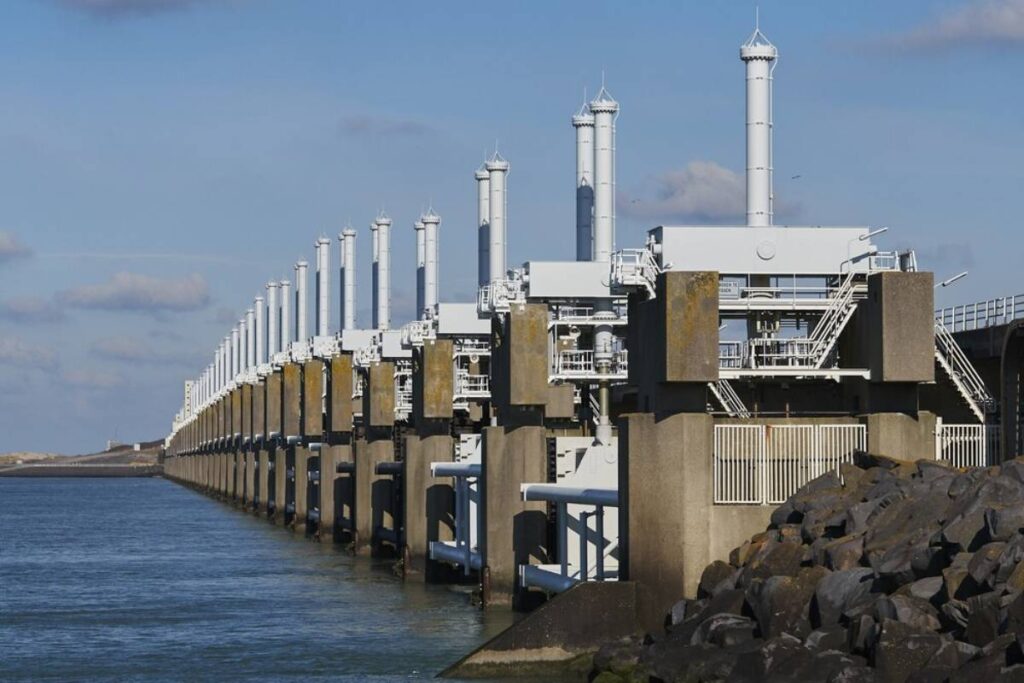The Science Blog

Ocean Thermal Energy: Tapping Renewable Power from the Seas
The Ocean – An Untapped Giant of Energy
Imagine a world where the vast and seemingly infinite oceans not only regulate our climate but also power our cities. This isn’t science fiction—it’s the promise of ocean thermal energy. As climate change grows worse and the need for renewable energy rises, many look to the ocean. It is one of Earth’s most plentiful resources for sustainable energy.
The ocean absorbs a staggering amount of solar energy each day. A small part of this thermal energy could meet the world’s electricity needs many times over. Ocean Thermal Enworld’snversion (OTEC) is the key technology here. It uses the temperature difference between warm surface water and cold deep-sea water to produce electricity.
In this blog, we’ll look at how ocean thermal energy works. We’ll also discuss its role in climate engineering and real-world applications that are already emerging. You’ll discover the science behind the process. You’ll also explore key challenges and environmental factors. Finally, find out what the future holds for this exciting clean energy source.
If you love sustainability, work in climate engineering, or are just curious about energy, this guide is for you. It shares insights on a renewable solution that can help us move away from fossil fuels.
What Is Ocean Thermal Energy Conversion (OTEC)?
Ocean Thermal Energy Conversion, or OTEC, is a process that transforms solar heat stored in the ocean into usable electricity. The concept relies on a simple principle: warm water rises and cold water sinks, creating a vertical temperature gradient.
OTEC systems take advantage of the natural temperature difference. They use warm surface water, usually over 25°C, to vaporise a working fluid with a low boiling point, like ammonia. This vapour drives a turbine connected to a generator, producing electricity. Cold water from the deep ocean (around 5°C) is then pumped up to condense the vapour back into a liquid, allowing the cycle to repeat.
There are three main types of OTEC systems:
- Closed-cycle systems – Use a working fluid in a closed loop.
- Open-cycle systems – Use seawater directly as the working fluid.
- Hybrid systems – Combine both methods for enhanced efficiency.
The concept of using the ocean’s heat gradient for power isn’t new. French physicist Jacques-Arsène d’Arsonval proposed back in 1881. However, only in the last few decades have tech advances made OTEC more practical.
Why Ocean Thermal Energy Matters in Climate Engineering
As the planet warms, finding carbon-neutral energy sources has become urgent. Ocean thermal energy offers a solution that is both sustainable and globally scalable. Here’s why it matters:

1. Abundant and Predictable
Ocean temperatures are more stable than solar and wind energy. This is especially true in tropical areas. This makes ocean energy a baseload power source—it can provide a consistent and reliable flow of electricity.
2. Climate Mitigation
OTEC helps climate engineering. It lowers the need for fossil fuels and cuts greenhouse gas emissions. Moreover, the cooling effect from drawing cold water to the surface may offer regional climate benefits.
3. Desalination and Hydrogen Production
OTEC systems can do more than generate electricity. They can also produce fresh water and green hydrogen. Both are vital for sustainable development.
4. Energy Access in Remote Areas
Many tropical island nations have limited access to energy and depend on imported diesel. OTEC provides a local, renewable alternative that can enhance energy independence and resilience.
5. Economic Opportunities
Investing in ocean thermal energy can create jobs in engineering, marine sciences, construction, and operations. This is especially true in coastal areas.
Challenges in Implementing Ocean Thermal Energy
Despite its promise, OTEC faces several hurdles:
1. High Initial Costs
Constructing offshore platforms, laying deep-sea pipelines, and building heat exchangers is capital intensive. The upfront costs of setting up OTEC facilities often deter investors.
2. Technical Complexity
Pumping water from depths of 1,000 metres or more requires specialised engineering. Preventing biofouling and corrosion in saltwater environments also poses technical challenges.

3. Environmental Concerns
Adding cold water to the ocean surface might change marine ecosystems and nutrient flows. Also, we need to manage the discharge of deep seawater back into the ocean. This helps prevent thermal pollution.
4. Limited Awareness and Policy Support
Ocean thermal energy lacks public awareness and policy support, unlike solar and wind energy. Governments are only beginning to explore supportive frameworks and subsidies.
5. Scaling Limitations
OTEC works best in tropical zones. It’s not as effective in colder areas because the temperature difference isn’t enough.
To overcome these barriers, we need teamwork across sectors, helpful regulations, and ongoing investment in research and development.
Current Projects and Real-World Applications
Several pilot projects and early-stage commercial ventures are paving the way:
- Hawaii’s NELHA (Natural Energy Laboratory of Hawaii Authority) held one of the first successful OTEC demonstrations. It produced net electricity using a closed-cycle system.
- Saga University in Japan has built and tested a small OTEC plant in Okinawa. They aim to make it commercially viable.
- Makai Ocean Engineering is still improving heat exchanger technologies. This helps boost efficiency and cut costs.
- The Maldives and French Polynesia are looking into OTEC. This could help them become energy-independent and more sustainable.
These projects show that ocean thermal energy is possible. They also give important data to improve the technology.
The Future of Ocean Thermal Energy
Looking ahead, ocean thermal energy could play a vital role in the global renewable energy mix. New developments in materials science, underwater robots, and AI modelling will make OTEC cheaper and more efficient.
Promising Developments:
- Floating OTEC Platforms – Reducing the need for fixed infrastructure.
- AI-optimised energy systems – Enhancing performance prediction and maintenance planning.
- Integration with Smart Grids – Enabling adaptive energy distribution in island networks.
Strategic Importance
The UN’s Sustainable Development Goals promote clean energy access. COP climate agreements also encourage innovation. Ocean thermal energy fits well with these long-term policy trends.
International cooperation can speed up OTEC development. This is especially true for countries with large tropical coastlines.
Conclusion: Riding the Wave Toward a Cleaner Future
Ocean thermal energy is a great way to add clean energy options. It helps us get closer to being climate resilient. It might not be a perfect solution, but it can provide reliable, renewable power from the seas. This makes it an important part of the global energy shift.
As technology improves and investment increases, using the ocean’s vast thermal energy seems more possible. Island nations and coastal communities could see a big change. This means sustainable power, economic growth, and better climate resilience.
Now is the time to support innovation. We need to demand policy frameworks and promote awareness of ocean-based solutions. We, as citizens, professionals, and policymakers, must seize the chance that climate engineering and ocean energy offer.
Let’s make the future renewable—one wave at a time.









